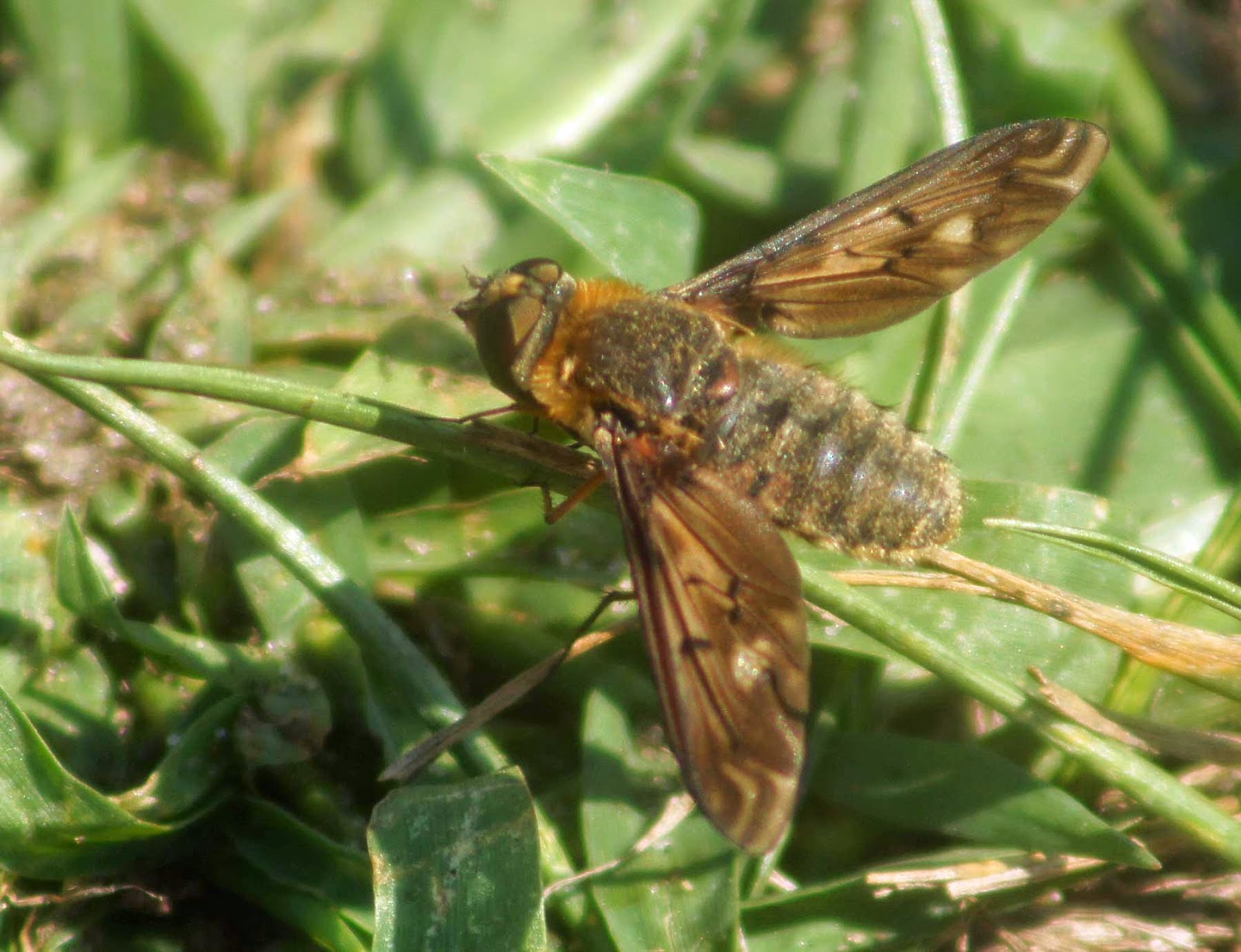 |
| Villa arenicola, Gander Mt. FP, Lake Co, IL 5/28/2014 |
This is a diverse group, both in terms of species (>5,000 worldwide) and structure. This is a small sample of the diversity -- many of the subfamilies I've never seen:
 |
| Exprosopa decora, Illinois Beach State Park, Lake Co, IL 7/21/2013 |
.jpg) |
| Poecilanthrax alcyon, Illinois Beach State Park, 9/3/2012 |
.jpg) |
| Systoechus vulgaris, Illinois Beach State Park, 7/12/2013 |
Despite the name Bee Fly, these are harmless nectar-feeders. That fearsome proboscis on Systoechus isn't for drawing blood! However, if you're a beetle grub or a wasp larva, these are scary critters. While the adults are nectar feeders, their larvae are parasitoids, waiting for their hosts to pupate before eating them alive. This sort of parasitism has been well-studied, especially in Hymenopterans, and Bee Flies present a perfect second opportunity for testing hypotheses. Yeates & Greathead did exactly that, finding that most clades had rather broad host preferences. (2) They argue that this is part of the explanation for the relatively low number of species in the family. (By comparison, Ichneumonidae (parasitic wasps) boasts >5,000 species just in North America and 60,000 to 100,000 worldwide!) (3)
(1) http://bugguide.net/node/view/9865
(2) Yeates, D. K., &
Greathead, D. (1997). The evolutionary pattern of host use in the
Bombyliidae (Diptera): a diverse family of parasitoid flies. Biological Journal of the Linnean Society, 60(2), 149-185.
(3) http://bugguide.net/node/view/150
(3) http://bugguide.net/node/view/150
No comments:
Post a Comment